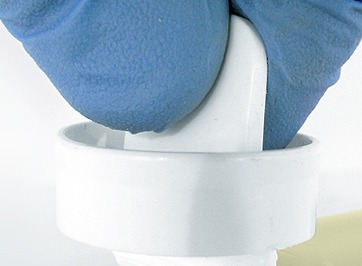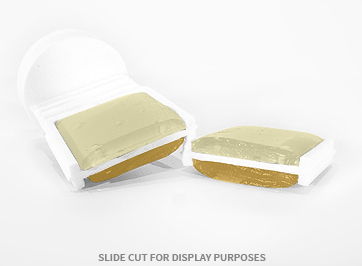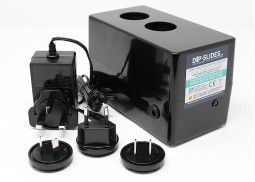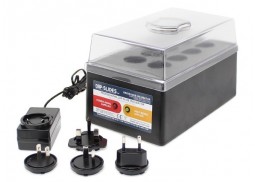The Textile Dipslide features two different agars (culture medium). It has nutrient TTC agar on one side. Nutrient agar will detect / show growth of a variety of non fastidious micro organisms and offers a total count bacteria result. The dipslide has Malt extract agar on the other side. Malt extract agar tests for / shows growth of yeasts and moulds (fungi). These dipslides will offer a good indication of both bacterial and mould contamination levels.
If your sample contains bacteria or fungi, colonies will grow on the dipslide agars. You can then count the colonies and compare with the included chart. These dipslides include red spot dye on the nutrient agar which makes it easier to count colonies as they appear as red dots.
The textile industry does use micro-organisms to its advantage in textile dye degradation and in the retting process. However, since textiles are organic products and moisture is used during the textile production process, other unwanted bacteria and fungi can grow. These can affect the quality of the fabric as well as the health of the consumer.
After certain anti-microbial, anti-fungal treatments, many manufacturers test the performance of their products. Microbiological testing is an important aspect of this. For example, many clothing manufacturers now include antibacterial finishes that are supposed to inhibit bacterial growth after periods of use. Clothing producers can test the effectiveness of these finishes by having test subjects wear their clothing and then they can micro biologically test the items after use.
Textiles used in medical or food applications are in particular need of microbiological testing.
Dipslides can be used prior to any antimicrobial treatments or afterwards (to test their efficacy).
Each dipslide box contains 10 dipslides with each dipslide housed within a shatterproof plastic tube.
Textile Dipslide Applications
- Medical Textiles
- Food textiles (cheese cloth etc)
- Transport upholstery - cars, planes, trains etc
- Clothing
- Houseware
- Building Awnings
How to use the Textile Dipslide
Simply remove the dipslide and press against a sample for approx 10 seconds. After this, replace the slide back into the tube and incubate for a minimum of 24 hours (up to a maximum of 48 hours).
A comparison chart is included so you can easily compare your results.
Carefully remove the sterile Textile dip slide from its tube ensuring that no contact is made with the agar (to avoid contamination).
For surface testing, press the Textile dipslide onto the surface. If needed, place a finger on the bottom of the slide (on the plastic, not the agar) to apply extra pressure.
For liquid testing, immerse the Textile dipslide into the fluid for 10 seconds then remove and allow to drain for a few seconds.
Apply a sample of the test substance to a sterile swab and gently apply to the agars.
Label the tube with the included stickers then place the slide into an incubator and allow to incubate.
Count the amount of colonies that have grown on the slide and compare them to the comparison chart provided.
Textile Dipslide Features
Each dipslide features a virtually unbreakable and flexible paddle allowing for even, full surface testing.
Due to the design of the dipslide, fluids will drain off quickly during testing.
Each slide has a handle built into the lid that is recessed to help keep your fingers dry during testing.
One side of the slide will have a circle indicator so you know which side was used for testing which type of contaminant.
Each dipslide is dual sided to allow multiple contamination testing with one test.
Each agar is thick (approx 4mm) and raised above the dipslide to allow for easy surface testing.
Dip Slide Storage
Store dip slides in a cool dry place (optimum temperature 8-15 degrees c). Use before the expiry date on the box.
Dip Slide Disposal
Used dip slides should be incinerated, autoclaved or soaked in disinfectant for several hours before disposal.
Additional Details
Product Reference : TXBTM2
Internal catalogue reference : DS001-79
Downloads
 (1.77MB)
(1.77MB)
 (436.23KB)
(436.23KB)
 (1.62MB)
(1.62MB)
 (1.75MB)
(1.75MB)

























